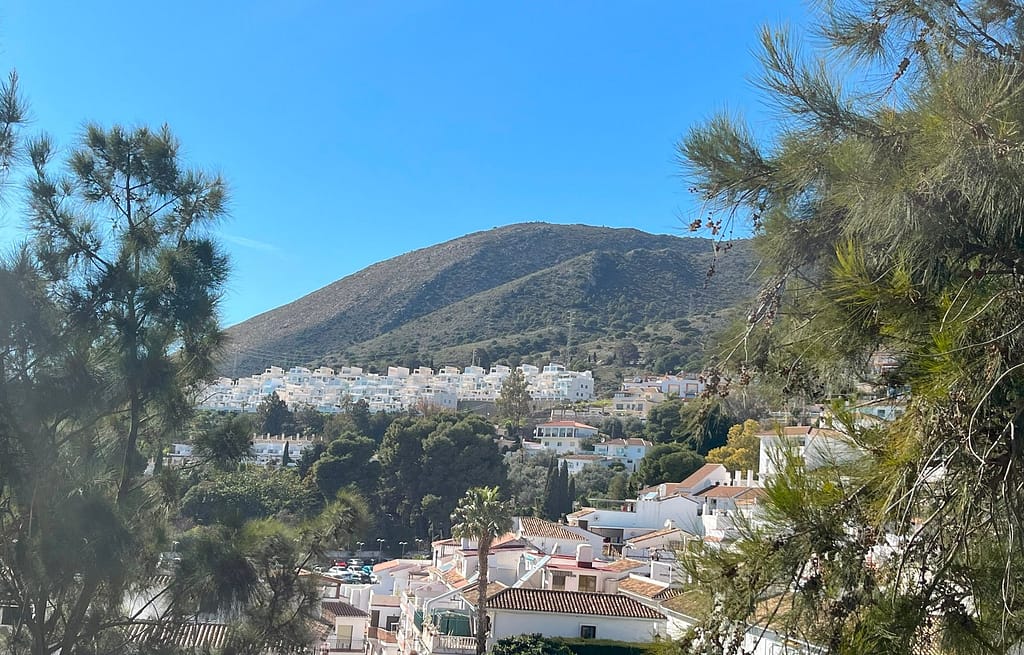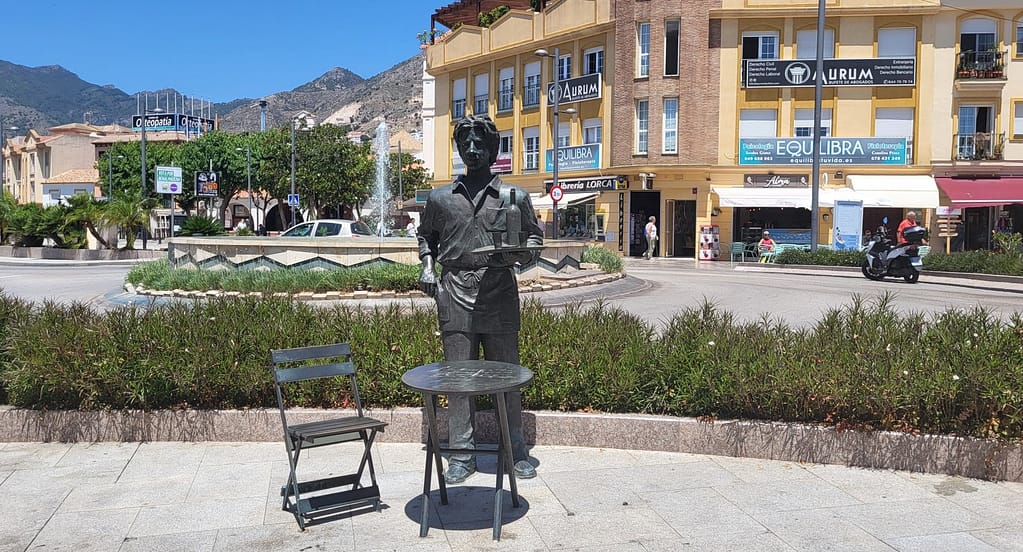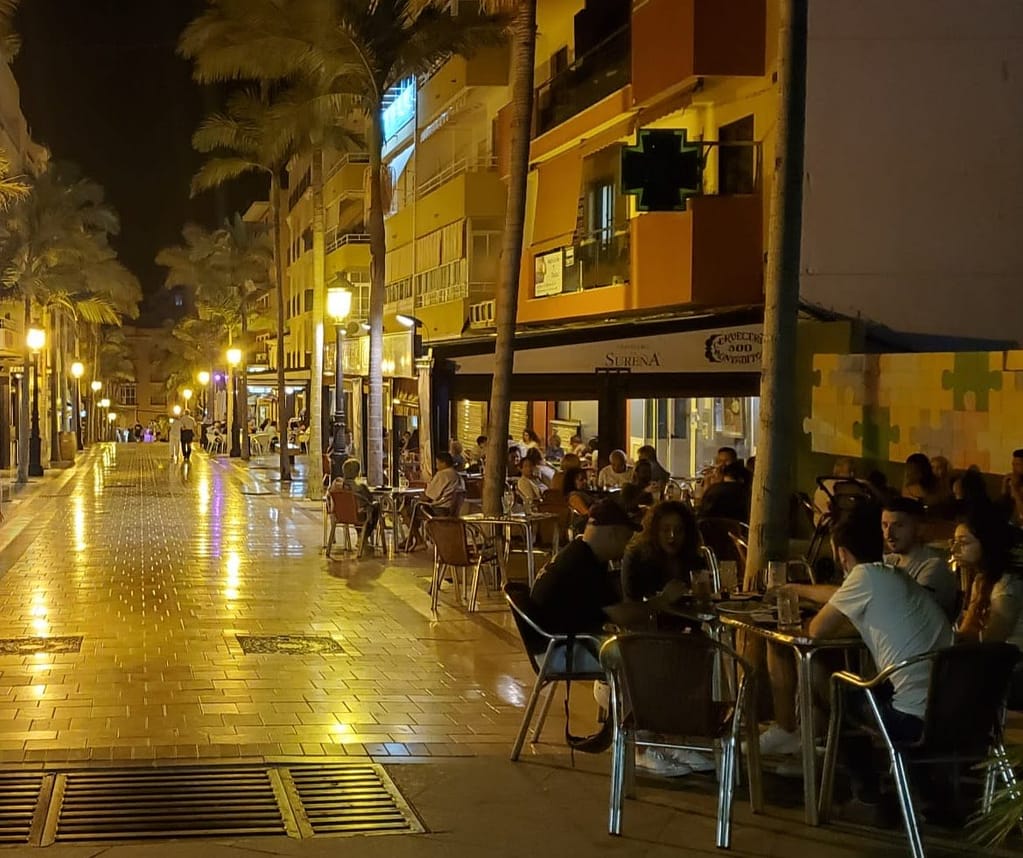Benalmádena: At a Glance

It’s an easy city to fall in love with. Especially, if you’re seeking a beautiful, friendly, safe and cosmopolitan place that combines an enviable degree of residential comforts with the benefits of a high-quality contemporary seaside resort.
Benalmádena is “the heart of Costa del Sol,” wrote Barcelo Group, one of the world’s largest hotel management companies. It called Benalmádena one of the most picturesque coastal towns in the Malaga province with “endless things to do and see.”
Snuggled between the sea and the mountains
A City of Three Happy Towns
Given its rather unique topography, Benalmádena is composed of three distinct parts that blend organically while preserving their unmistakable identities and charm.
Benalmádena Pueblo

the old town
Nestling in the mountain foothills, Benalmádena Pueblo is the historical part of the municipality that has the look and feel of Andalucia’s famous mountain “white villages.”
Pueblo offers stunning panoramic views of the city from many vintage points. Enjoying a meal at a restaurant — or simple sipping café con leche, a local staple — surrounded by the views of the mountains above or the coast below is a wonderful experience and a favorite pastime.
Given the scenic nature of the surroundings, Benalmadena Pueblo is the kind of place where it’s hard to resist going for a stroll, even if walking is not your favorite activity. Rows of exotic plants line up winding narrow streets. Traditional multicolored flowerpots adorn whitewashed walls, creating an ambiance that draws visitors and residents alike.
And yes, you’ll get the extra benefit of a dose of good exercise amid hilly terrain.

Arroyo de la Miel

the middle town
Halfway between the mountains and the coast lies Arroyo de la Miele, or Honey Stream. This middle part of the city is an important commercial center, a bustling area of businesses and municipal offices, shops, cafes and restaurants amid pedestrian-friendly streets and plazas.
One of the great city conveniences, the train station, is centrally located in Arroyo. From here, you can take a train to get to the international airport, the high-speed rail station or Malaga’s historic old town. The neighboring towns of Fuengirola and Torremolinos are also just a short train ride away.
The tourist boom in the 1960s — and the convenience of the coastal railway service between Fuengirola and Malaga — helped transform
the Arroyo into a large and vibrant section of the city. It hosts several important municipal offices, as well as cultural establishments.
One of them is Casa de la Cultura which offers a wide array of cultural programs, including exhibitions, concerts, theatrical performances and family-focused activities.
From the Arroyo, you can also take a ride on one of Benalmadena’s signature attractions, the Telefereco cable car. A 15-minute aerial ride will take you to the top of Monte Calamorro to enjoy the spectacular views of the city and far beyond.

Benalmádena Costa


The coast of many delights
Stretching along the sea, the third part of the city, Benalmádena Costa, combines the city’s bustling promenade and hotel zone with quiet residential areas where single houses are mixed with gated communities, schools and golf courses.
Rich Heritage Steeped in Andalusia’s Past


A touch of history
Discovery of a cave in the Calamorro mountain that overlooks Benalmádena helped archeologists date human settlements in the area as far back as 18,000 years ago.
Ancient Phoenicians arrived in the south of the Iberian Peninsula around 800 B.C., followed by the Romans in the 2nd century B.C. As a Roman colony, the area prospered but after the fall of the Roman Empire it was overrun by barbarian invasions from the north.
The rule of Visigoth kings, however, did not last long. It ended in the VIII century with the conquest of southern Spain by the Moors, Muslims of ethnically mixed heritage that included Berbers and Arabs from northern Africa. Crossing the narrow Straight of Gibraltar, the Moors quickly gained control over a large territory they called al-Andalus.
The Moors were eventually driven out of the Peninsula by joint forces of Christian kingdoms in a nearly 200-year venture known as the Reconquista. Aided by the marriage of the monarchs of Aragon and Castile, Isabela I and Ferdinand V, it concluded with the fall of the Moors last stronghold in Granada in 1492.
What’s In a Name?
A town with rich mining roots
Availability of mineral resources in the area, including iron and copper, was one of the things that attracted the Phoenicians here in the 7th and 8th centuries BC.
Later on, the interest in mining continued under the Moors. Which, according to a majority of scholars, was where Benalmádena got its name from — it has Arabic roots and relates to the mining activity in the area and derives from the Arabic word “ma’din”. One of the top contenders for name origin, for instance, is the Arabic phrase “Ibn al-ma’din,” or “Sons of the Mines.” Another theory suggests a variation on this idea — the name is based on the word “Bina al-ma’din”, which means mine building.
